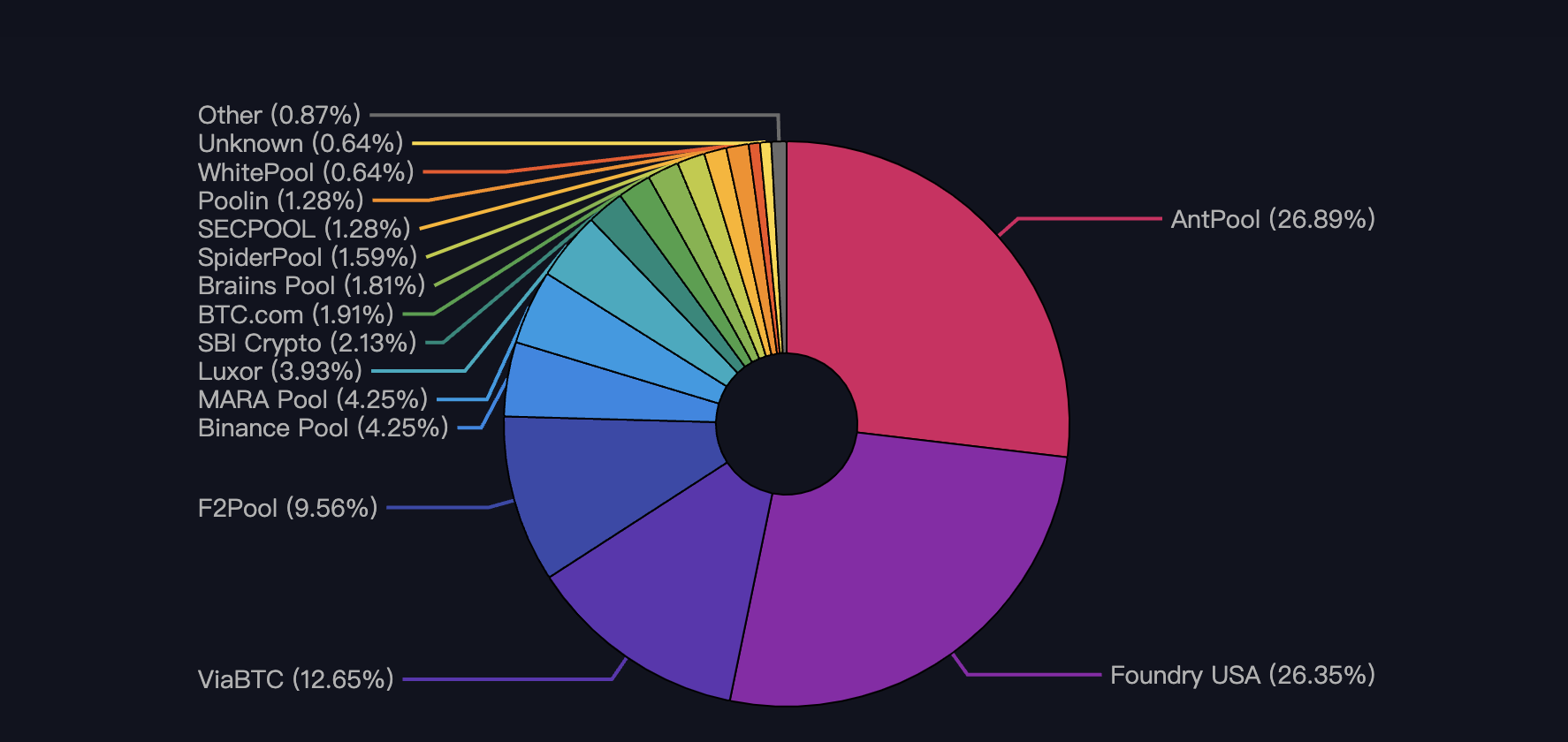In the 15-year mining history of Bitcoin, there have been lucky individuals who, with only a small share of hashrate, successfully solved complex mathematical problems, winning the right to record blocks and the corresponding block rewards. However, such success stories are difficult to replicate, as the current total Bitcoin hashrate is as high as 509 EH/s (as of May 7, 2024), equivalent to 2.545 million Antminer S21 competing simultaneously for the next block's recording rights.

According to statistics from the National Weather Service, the probability of someone being struck by lightning in a certain year is only 1 in 1,222,000. For individual miners with only a few mining rigs, the probability of successfully winning the right to record blocks is even lower than the probability of being struck by lightning. Thanks to the emergence of mining pools, many individual miners can pool their hashrate into the mining pool, forming a "collective hashrate force" to compete for block recording rights together. This cooperative approach greatly increases the success rate of obtaining block recording rights. Although miners cannot individually claim all block rewards, they can also receive stable returns based on their respective hashrate contributions.
Certainly, lucky value also plays a role for mining pools. A mining pool that aggregates the hashrate of many miners can be seen as a "big miner" in itself. When luck is on their side, the mining pool may compete for more block recording rights, meaning it mines more blocks; however, when luck is poor, the number of blocks mined is relatively low.
What is Lucky Value?
This involves the concept of mining luck, also known as "block rate," which refers to the ratio of actual block output to theoretical block output.For example, as of May 7th, the third-ranked mining pool ViaBTC has a hashrate of 64.7 EH/s, while the total network hash rate is 509 EH/s. Therefore, theoretically, the probability of ViaBTC finding a block is 12.7%, meaning that approximately 13 out of every 100 blocks will be mined by ViaBTC. However, in practice, ViaBTC may sometimes have exceptional luck and mine 20 blocks, while other times it may only manage to mine 10 blocks.

Mempool provides data on the average share of Bitcoin hashrate across different mining pools in the past week.
For miners who join mining pools and want their mining rewards less affected by luck, they may prioritize Pay Per Share (PPS), Pay Per Share+ (PPS+), or Full Pay Per Share (FPPS) allocation models. These models essentially mean "working for the pool," where even if the pool doesn't mine any blocks all day, it still pays miners for every valid share submitted based on theoretical rewards.
If you are optimistic about the future luck of the mining pool, you can choose the Pay Per Last N Shares (PPLNS) allocation mode. Under this mode, a miner's earnings are closely tied to the actual number of blocks mined by the pool. The more blocks the pool mines and the higher its luck, the more earnings miners opting for this mode will receive.
How Recent Luck Affects PPS+ and PPLNS Earnings?
Miner revenue consists of block rewards and mining fees.
Taking the example of joining ViaBTC on May 6th. According to blockchain explorer data, the average luck of the ViaBTC in the past 7 days is 92.17%. Assuming Miner A has a hashrate of 1 PH/s, and they choose to join ViaBTC on that day, settling earnings using PPS+ with a 4% fee, their theoretical earnings for the day would be: 1 / (628.28 * 1000) * (3.125 * 6 * 24) * (1 - 4%) + daily mining fee = 0.0006876 BTC + daily mining fee.
Assuming Miner B also has a hashrate of 1 PH/s, similarly connects to ViaBTC, but chooses for PPLNS for earnings settlement on that day with a 2% fee, their theoretical earnings for the day would be: 1/ (628.281000) (3.125624)92.17%(1-2%)+daily mining fee=0.0006470 BTC + daily mining fee.
Miners opting for PPS+ and PPLNS modes both participate in mining fee distribution, hence the daily mining fees for these two modes are the same. The difference in earnings is related to block rewards. According to the above calculations, it can be observed that due to the recent low luck value of ViaBTC mining, Miner B, who chooses the PPLNS mode, would earn 0.0000406 BTC less than Miner A, who chooses the PPS+ mode.
It can be seen that the higher the luck value of the mining pool, the more mining rewards miners choosing the PPLNS profit-sharing model will receive. However, it is worth noting that luck value only reflects the mining performance of the mining pool over a period of time and cannot accurately predict the future. In the long run, the luck value of the mining pool will gradually approach 100%.